Doenjang jjigae made with beef! The intense, hearty flavor of beef works great with doenjang. You can use any flavorful cut of beef.
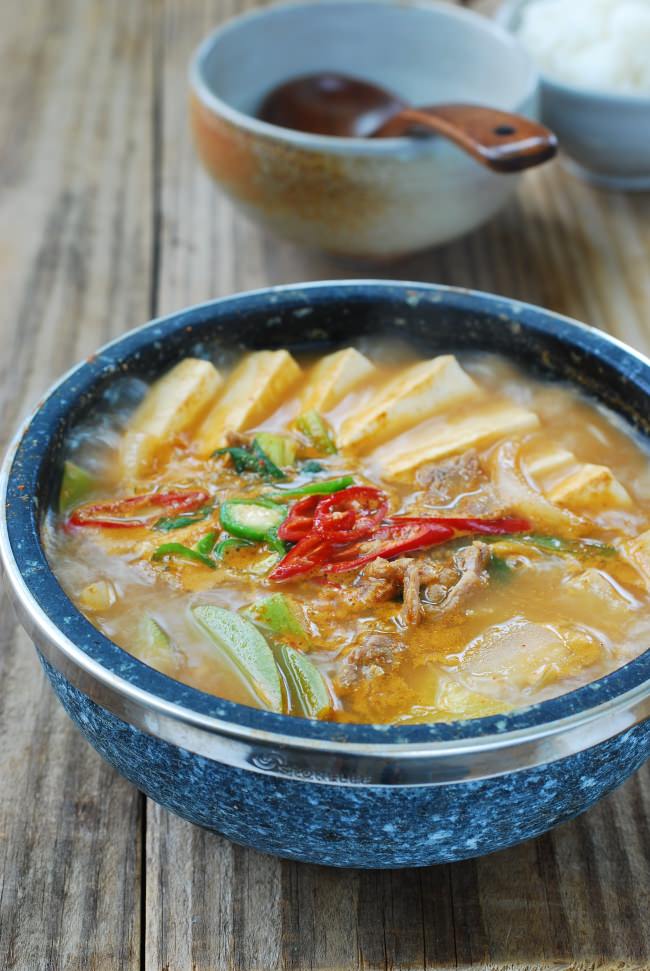
Doenjang jjigae (된장찌개) is a staple Korean stew made with doenjang (된장), fermented soybean paste. Everyone makes this dish a little differently and has his/her secret to great taste. Every time I make this stew, I find myself making it a little differently as well. Without a doubt, doenjang is the defining ingredient. Depending on the other ingredients added, you can make endless variations of the stew.
This is the third doenjang jjigae recipe on the blog. The first one was made with pork, and the second one was seafood doenjang jjigae. The fatty pork adds richness to the stew, while seafood adds a clean, briny flavor. This recipe uses beef (sogogi, 소고기). The intense, hearty flavor of beef works great with doenjang as well.
Ingredients for beef doenjang jjigae
Meat:
I used stew meat, but any cut of beef works. Be sure to cut thinly if using a tough cut of meat. In Korea, doenjang jjigae made with brisket (chadolbagi, 차돌박이) is popular both at home and at restaurants.
Vegetables:
I usually use Korean white radish (mu, 무), zucchini, onion, and fresh green and/or red chili pepper. If you recall from my previous posts, Korean radish is commonly used in making a broth. It adds flavor and helps create a clean, refreshing broth. You can add potatoes if you like slightly thicker stews.
Broth:
It’s a very Korean practice to save the water used to rinse rice (ssalddeumul, 쌀뜨물) and use it as a stew base. The rice water adds starch to the soup and works as a binding agent between the soybean paste and the broth, while enhancing the flavor of the doenjang. If you didn’t have to make rice, or forgot to save the water, add a little bit of flour or rice powder to tap water.
Whether to use gochujang (고추장, Korean fermented red chili pepper paste) or gochugaru (고추가루, Korean red chili pepper flakes) is a matter of preference. Gochugaru simply adds a spicy kick, while gochujang adds a bit of sweetness and saltiness to the stew.
As I mentioned in my previous posts, a small amount of vinegar added at the end will brighten the doenjang taste, making the stew even more delicious! Some people also use sugar to balance out the strong flavor of doenjang.
Korean stews are often made and served in an earthenware, called ddukbaegi (뚝배기). This type of cookware better contains and retains heat, so it provides even distribution of heat during cooking and keeps the food warm while being served.
For more Korean cooking inspirations, follow along on YouTube, Pinterest, Twitter, Facebook, and Instagram.

Ingredients
- 2 ounces radish
- 1/2 small zucchini about 3 ounces (mushrooms and potatoes can be added if desired)
- 1/4 small onion
- 1 chili pepper green and/or red
- 1 scallion
- 3 ounces beef stew meat or other well-marbled cut
- 8 ounces tofu
- 2 tablespoons Korean soybean paste doenjang
- 1 teaspoon Korean chili pepper paste gochujang
- 1 teaspoon minced garlic
- Black pepper to taste
- 1/2 teaspoon vinegar
- 2 cups of water used to rinse rice ssal ddeum mul (or add 1/2 teaspoon flour or rice powder to clear water)
Instructions
- Serve with rice while it is still bubbling from the heat.


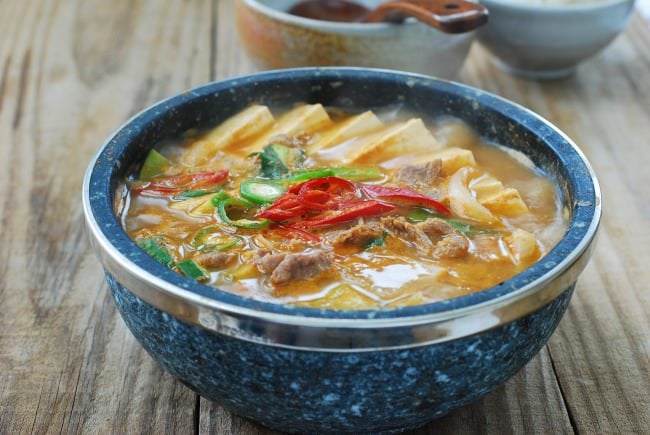
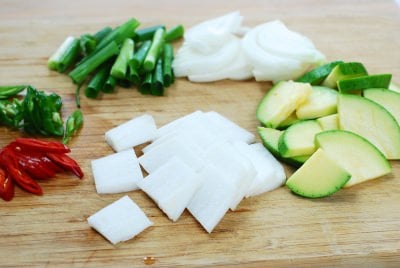
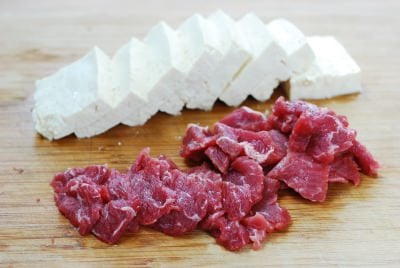
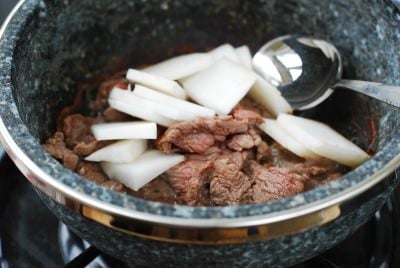
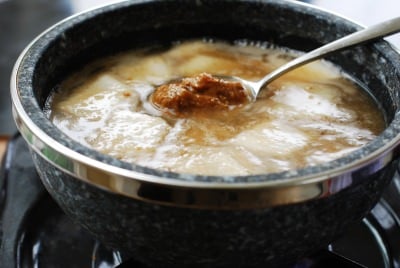
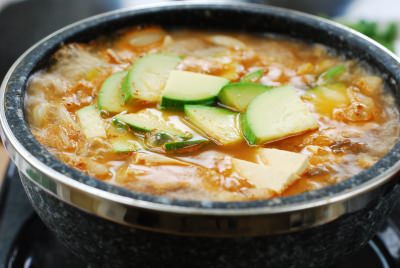


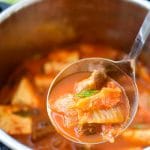
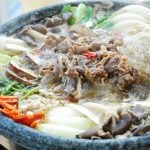













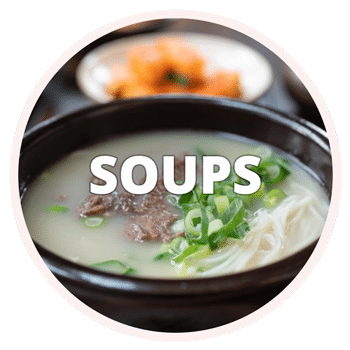
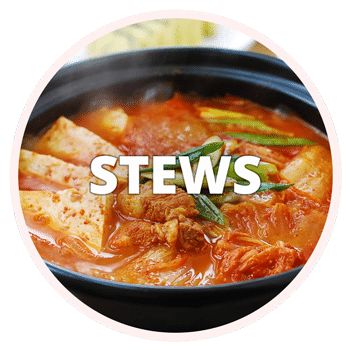


Oskar L says
I’m from New Zealand and I love making recipes from your website and this one is one of my favorites!
I make these dishes for my partner who misses Korean food that her mother always made her.
Thankyou for all the inspirations!
Hyosun says
That’s great to hear! Thank you for cooking my recipes all the way from New Zealand!
Grace says
I must did something wrong with the recipe but it tastes bland, I tasted this dish from a Korean restaurant before and it’s tasty. I ended adding up more doenjang and a tiny bit bouillion to meet my expectation. Otherwise, doenjang will always be a good dish:)
Khorkie says
Hi! I’ve been wanting to try this, unfortunately we have limited ingredients due to the quaratine. Is it okay to substitute zucchini with pumpkin and scallions to spring onions? I hope you would notice me. Thank you!
Hyosun says
Yes definitely! Will be delicious!
Lori L says
My mom used to make this stew for us growing up & now I make it for my kids! Thank you for the delicious recipe!
Hyosun says
Lori – I’m very happy to hear you’re continuing the heritage through the food! Cheers!
Buster Epperson says
I made this for lunch and at 10 p.m., I am still full. This recipe is awesome! Thank you.
Hyosun says
oh nice! Thank you for trying it and leaving me a good review!
Micheal Wilson says
Do you use oil when sautee the beef?
Hyosun says
No I don’t. The radish and beef will release some liquid, so it should be okay without adding any oil. If it gets too dry, you can reduce the heat or add a little bit of oil or water.
Amber says
I made this last night and it was absolutely delicious. Great flavors, perfect hint of spice from the gochujang and I only added a few slivers of fresh chili pepper. The thing that I love about a lot of Korean stews is that many of them do not require large portions of meat, are easy to put together and actually very cost effective, healthy and satisfying.
Hyosun says
Great, thanks! You’re right a little bit of meat goes a long way and stews are easy to put together.
Niki says
Hi! Is there an instant pot version of this recipe?
Thanks!
Hyosun says
This stew doesn’t take much time to begin with, so there’s really not much you can benefit from using the Instant Pot. But, if you like to use it, I’d just use the Sauté function to cook.
Jade says
Hello! I love your blog. I’ve been searching for recipes that recreate the food my Korean born mother, grandma and auntie made when I was a girl and your dishes are the best. Is there a certain type of vinegar you recommend for this jjigae?
Thank you!
Hyosun says
Thanks for the love, Jade! Any clear vinegar is fine. All you need is a small amount of acidity.
Jade Justad says
Thank you!
emilio says
i have just subscribe to your blog.i have already tried some of recipes.. not bad for thr first time but the taste is slghtly different from the one in Korea. may be some ingredients are different here in Spain.
anyway thanks for your recipes.
Hyosun says
Yes, the ingredients can make big differences, but I can assure you my recipes are very authentic. Thank you for subscribing!
Mr. Chang says
This looks delicious and reminds me of my mom’s cooking. Thank you so much for posting.
Hyosun says
Thanks! Hope you make it soon and enjoy.
catrina ransom says
My family loved the beef but I also did one with chicken the same way and it was delicious. This was a great recipe thank you!
valerie curl says
I just made this recipe. It’s utterly delicious…and that’s only the broth! Thank you for this recipe. I’ve grown to be a big fan of Korean cooking and this recipe is among the best yet.
Jessica says
I really love your recipes!! Great best in English version!!
Patricia Rixon Sirois says
I’m so thrilled to have found you! I’ve wanted to try Korean food for a long time, but didn’t know much about it. With your lovely recipes and style of writing, I am planning on going to try out a restaurant as soon as it opens in an hour from now!!! Korean food seems so layered and delicious in flavorings, and the beautiful way the food is presented. YUM!
Courtney says
The recipe looks delicious–can’t wait to make it this weekend. Is it possible to buy bowls from Stone Lee in the U.S.? Those are really beautiful.